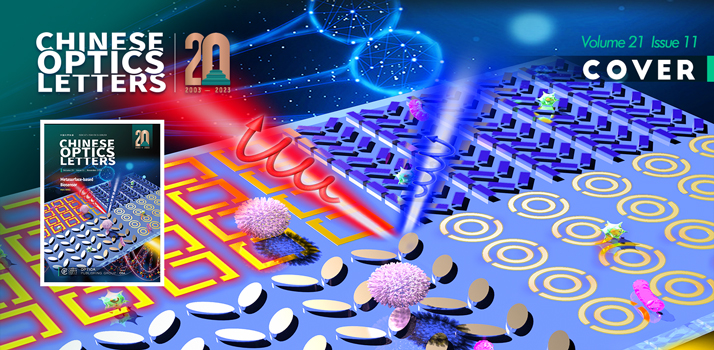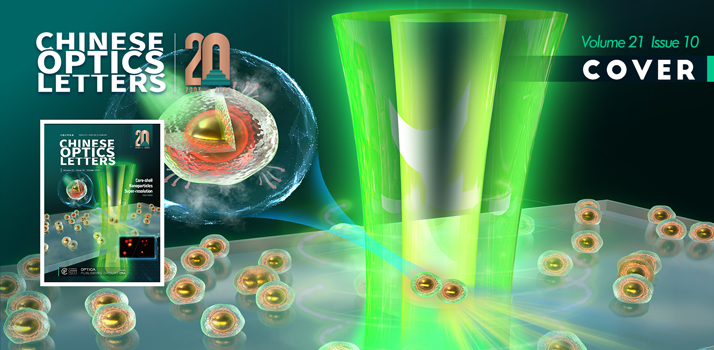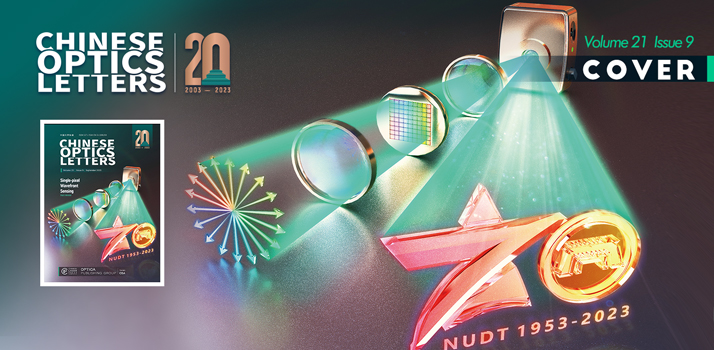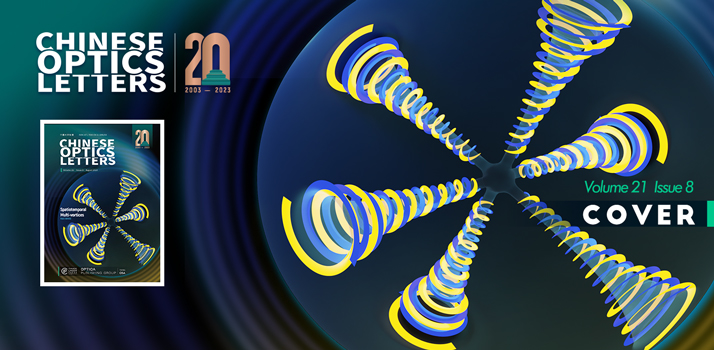Search by keywords or author
Journals >Chinese Optics Letters

Microwave Photonics
Ping Li, Kunlin Shao, Yamei Zhang, and Shilong Pan
Chinese Optics Letters
- Apr. 26, 2024
- Vol. 22, Issue 4 (2024)
X-ray Optics
De Wang, Hong Yu, Zhijie Tan, Ronghua Lu, and Shensheng Han
Chinese Optics Letters
- Apr. 26, 2024
- Vol. 22, Issue 4 (2024)
Nonlinear Optics
Yan Sheng, Shan Liu, Xiaokang Hu, Xin Chen, Tianxiang Xu, Ruwei Zhao, and Wieslaw Krolikowski
Chinese Optics Letters
- Apr. 26, 2024
- Vol. 22, Issue 4 (2024)
Lasers, Optical Amplifiers, and Laser Optics
Hongxing Yang, Yan Wang, Ziqi Yin, Pengcheng Hu, Ruitao Yang, and Jing Li
Chinese Optics Letters
- Apr. 26, 2024
- Vol. 22, Issue 4 (2024)
Lasers, Optical Amplifiers, and Laser Optics
Yanru Zhou, Lifan Fan, Kai Xu, Wenyao Liu, Enbo Xing, Jun Tang, and Jun Liu
Chinese Optics Letters
- Apr. 26, 2024
- Vol. 22, Issue 4 (2024)
Editors' Picks
The photonic topological insulator, which is the electromagnetic analogy of the topological insulator in electronic systems, has attracted a great deal of attention due to its topologically protected one-way transport of edge states. In the quantum Hall effect system in which the time-reversal symmetry is broken through external magnetic fields, the topological chiral edge states and topological one-way waveguides have the best robustness due to their unique features of free backscattering and immunity against sharp bends and defects. However, the high-efficiency coupling and conversion between topological chiral edge states and classical guided waves, which are essential for feeding energies into and extracting signals from these topological waveguides, have not been well studied.
Chinese Optics Letters
- Apr. 19, 2024
- Vol. 22, Issue 2 (2024)
Editors' Picks
Because of the explosive growth of bandwidth (BW)-intensive applications, network traffic is boosting dramatically. To handle the ever-increasing network traffic demands, novel technologies are desired to update optical networks to improve spectrum efficiency and transmission capacity. With the characteristic of fine-grained BW allocation, elastic optical networks (EONs) allow efficient spectrum utilization. In addition, space division multiplexing (SDM) is a technology that exploits the core or mode as an independent data channel to further expand capacity. Hence, combining EONs with SDM can offer a promising solution for tackling the capacity limitation.
Chinese Optics Letters
- Apr. 19, 2024
- Vol. 22, Issue 1 (2024)
On the Cover
Since the Bessel beam was proposed as an exact solution of propagation-invariant mode to the Helmholtz equation by Durnin in 1987, it has attracted a great deal of research interests. Due to its properties of non-diffraction and self-healing, the Bessel beam has been widely used in the fields of free-space optical interconnects and communications, optical capture and particle manipulation, optical micro-nano machining, optical microscopic imaging, and femtosecond laser processing. Recently, the propagation and manipulation of Bessel beams have become an issue of fundamental importance.
Chinese Optics Letters
- Apr. 10, 2024
- Vol. 22, Issue 2 (2024)
Editors' Picks
Making use of acousto-optic Bragg diffraction effect, Acousto-optic modulators (AOMs) are versatile active optical devices that can e?iciently change both the frequency and the propagating direction of an optical field in real time, AOMs are widely used in optics and laser technology. In the experiments related with quantum optics and quantum information technology, AOMs have been used in various applications, including the controlling of probe light in quantum memory, observation the beating signal from single photons, generation of a phase locking reference in squeezed vacuum state generation experiment and in photon subtraction based Non-Gaussian state generation experiment.
Chinese Optics Letters
- Mar. 29, 2024
- Vol. 22, Issue 2 (2024)
Top Downloads
- Chinese Optics Letters
- Vol. 21, Issue 11, 110003 (2023)
- Chinese Optics Letters
- Vol. 21, Issue 11, 111201 (2023)
- Chinese Optics Letters
- Vol. 21, Issue 12, 120051 (2023)
- Chinese Optics Letters
- Vol. 21, Issue 8, 081101 (2023)
- Chinese Optics Letters
- Vol. 21, Issue 9, 090002 (2023)
- Chinese Optics Letters
- Vol. 21, Issue 5, 051101 (2023)
Call for Papers
Editor (s):
Call for Papers
Editor (s):
Special Issue on the 20th Anniversary of Wuhan National Laboratory for Optoelectronics (WNLO) (2023)
Call for Papers
Editor (s):















